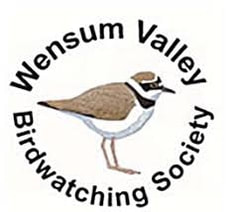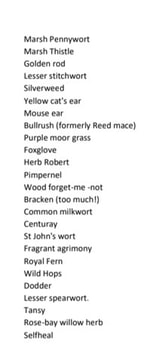|
Leader: Francis Farrow Coordinator: Cath Robinson Reporters: Don Pearson & Cath Robinson (Cley) Photographs: Bryony Pearson Species List: Liz Gibson & Cath Robinson (Cley) The visit was hosted by Francis Farrow, the warden, whose knowledge of the Common goes back a good many years and provided so much information on the fauna & flora. There is so much to this Common which covers 63 acres, including the adjacent Sheringham Common, and which hosts more than 20 varieties of butterfly alone including a White Admiral seen the previous week. The site is an SSSI and also incorporates Special Areas of Conservation. We set off at 10:15 and a little over 2 hours later, which flew by (sorry for the pun), we were disappointed to be leaving. There is so much more to see. The group recorded over 70 plant species, 12 or more butterfly, and 20 birds. The birds were taking a bit of a break during our visit; don't underestimate the variety of birds you can see at Beeston though, that is when we are not there, including Firecrest, variety of Warblers, Redstart, Winchat, Bittern as well as a Nightjar, and also a Carrion Crow which has a voice defect, so instead of a cawing noise actually emits the sound of a bell. Work that one out. For Nick, who clearly has a special interest in bees, there are apparently over 1,000 varieties of bees in Norfolk (not a lot of people know that), we found 5 species on our visit....a good start! Thank you to Cath for organising the visit. Buxton Common is easily accessed off the A149 just east of Sheringham. Lots of parking in the lay-by more or less opposite the Priory Maze attraction, Bryony and I shall certainly be back. Whilst trying to make notes for this brief report, which I was doing on my mobile phone, I managed to walk into a low hanging branch. My injuries were slight, mostly my pride, when several of the group passed comment about people with mobile phones not looking where they are going. In my defence, I sacrificed my pride in the name of WVBS! After a great guided tour around Beeston Common four of us went on to Cley to see what was about. We decided it was worth a walk up the east bank and then maybe try a hide. The East Bank rarely fails to deliver something and this was no different. 5 Spoonbills showed very well and white and in fact 2 were busy feeding not too far out on Arnold’s Marsh. We quickly found several Ruff on the Serpentine and then were delighted to see a Spotted Redshank quite close by and still in summer plumage, albeit a bit tatty, closely followed by a Common Sandpiper. There were many distant Black-tailed Godwits, some still in summer plumage, at the back of Arnold’s Marsh, the occasional Curlew, a distant Greenshank and still plenty of Sandwich terns and at least one Common tern again on the island at the back of the marsh. Swallows were swooping around the shelter and we spotted some brilliantly blue Common Blue butterflies on the bank. We stopped off briefly at Bishop’s Hide. The Lapwings had taken off just before we arrived and the guide inside wondered if we’d seen the Hobby. Well, no; we’d just missed it. And, in fact, we saw no Marsh harriers this visit either.
There were several dead birds, mostly gulls we thought. We spent a long time looking at the only small wader we could find but it was a long way off, sitting behind a feather blowing in the breeze. I still think it was a Little Stint. But..... We left happy with our afternoon’s work especially the Spotted Redshank: first for the year for all of us.
0 Comments
Leave a Reply. |
Please feel free to read through our reports from our monthly outdoor meetings. Archives
May 2024
Categories |




 RSS Feed
RSS Feed
